
The University of Tokyo Hokkaido Forest 125th Anniversary Support Fund
【Important announcement】As of October, 31, 2024, we will be ending the donationcampaign for this project.
We sincerely appreciate yoursupport.
~Connecting Sustainable Forestry to the Future~
Message from the Director
~Connecting Sustainable Forestry to the Future~
The University of Tokyo Hokkaido Forest, Graduate School of Agricultural and Life Sciences, The University of Tokyo (hereafter referred to as the UTHF) was established in 1899 for the purpose of research and education of boreal forestry and forest science. For more than 60 years since 1958, the UTHF has been conducting long-term, large-scale natural forest management that are unprecedented in Japan and abroad, using a meticulous method called the "Rinbun Segyo Ho" (Stand-based Silvicultural Management System), which respects the characteristics of the forest and its natural resilience. The UTHF is home to rare plants and animals, including the black woodpecker (Dryocopus martius), a protected species as a natural monumentdesignated by the Japanese government, and the project aims to harmonize and balance the conservation of forest ecosystems and the use of renewable wood resources.
The UTHF will celebrate its 125th anniversary in October 2024. To celebrate this memorable milestone and for further development, we have planned the implementation of the "125th Anniversary of the Establishment of the University of Tokyo Hokkaido Forest Project". Through this project, we will look back on our progress to date, document it through various media, and disseminate it both nationally and internationally. We are committed to taking the lead in contributing to the sustainable use of forests, the conservation of biodiversity, and the building of a future decarbonized society.
Director, The University of Tokyo Hokkaido Forest
Graduate School of Agricultural and Life Sciences
The University of Tokyo
What are The University of Tokyo Forests (UTF)?
The UTF was established to conduct basic and applied research on forests, trees, and forestry, and to provide an educational venue for students studying forestry. The first UTF was established in Kiyosumi, Chiba Prefecture in 1894 (Meiji 27), and has been in existence for more than 100 years to date. Currently, there are seven UTFs located throughout Japan, covering a total area of 32,300 ha, which is equivalent to five times the area encircled by the Yamanote Line in Tokyo.
For more than 100 years, the UTF has been well maintained and managed by numerous faculty and staff members, while continuing to accumulate survey and observation data on the growth of trees in plantation and natural forests, the plants and animals living in the forests, and the meteorology and hydrology, etc., as well as being used in many educational and research settings. The rich forests owned by the UTF are sought after by many educators and researchers, both inside and outside the university, and continue to be used as fields for education and research. In recent years, in response to social demands, we have been actively disseminating the knowledge and experience we have gained over the long history of the UTF to a wide audience through social education, in addition to focusing on cooperation with local governments and local communities.
What is the Rinbun Segyo Ho (Stand-based Silvicultural Management System)?
Forests have two functions: a public function to maintain the environment and an economic function to produce timber. The “Rinbun Segyo Ho” believes that both of these functions can be further developed in the future if forests are managed correctly. The term “Rinbun” refers to the classification of the various states of the forests into similar ones. We will then handle each forest type in a manner that we deem to be the most appropriate for that type.
The Furano region, where UTHF is located, is situated in the northern conifer mixed forest zone, where boreal conifers and temperate broad-leaved trees intermingle. However, not all areas have an equal mix of conifers and hardwoods, and careful observation reveals a variety of forests within the forest, some with more conifers and some with more hardwoods. The most important factor in the "Rinbun Segyo Ho" when separating forests in the various states is whether or not the small to medium diameter trees (recruited trees) that will carry the next generation are well prepared. Forests with sufficient new growth will only be harvested (timber production). In contrast, forests with inadequate regeneration require supplemental work (e.g., planting) to obtain tree regeneration. Based on this major typology based on the status of natural regeneration, forests are further classified according to the dominant tree species and the process of forest establishment. Specifically, the type and stem-diameter of each tree within a certain area is surveyed to determine the current status of each forest segment. The figure is part of a silvicultural planning map produced through the survey. Based on the results, we decide which trees to cut down, one by one, with an eye to improving the forest (health, growth, and traits).
Forests are constantly changing their appearance. The basic idea of the "Rinbun Segyo Ho" remains the same, but its silvicultural operation changes to suit the forest. We believe that resourcefulness and flexibility are the key for people to make moderate and effective use of forests, which are an aggregate of various elements. The UTHF will continue to be used to research and practice "Rinbun Segyo Ho" that is in line with the times.

Under the "Rinbun Segyo Ho", trees are classified into several forest types according to their density, species, size, and natural regeneration status. Harvesting and other silviculture operations are conducted according to the forest status of each forest type.
※Forest type classification map (Compartment 51).

At first glance, the forest appears to be pristine, but in fact it has been selectively logged (cut down partially) a total of six times over the past 60 years. Every 10-15 years, trees equivalent to 7-17% of the growing stock (the volume of trees that make up the forest) have been harvested.
※The image shows the same area as the forest type classification map (Compartment 51).


Image of area to be logged based on the forest survey.
※Trees with the red-colored crowns are to be harvested
※The image shows the same location as the forest type classification map (Compartment 51).
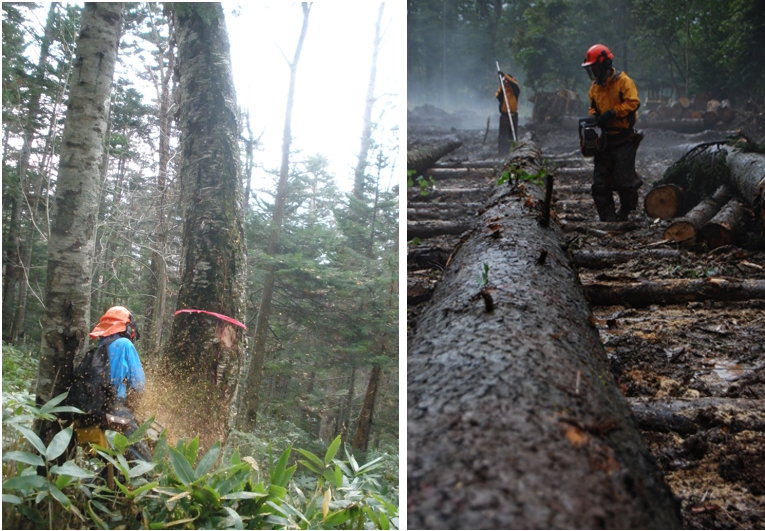

Some of the plants and animals inhabiting UTHF.
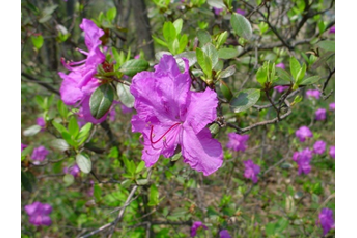
Rhododendron dauricum
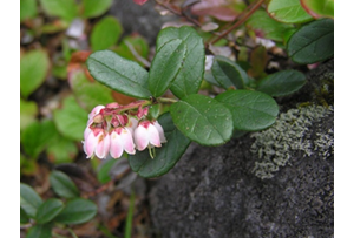
Vaccinium vitis-idaea
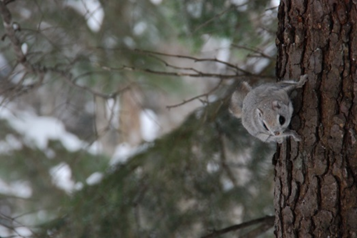
Pteromys volans orii
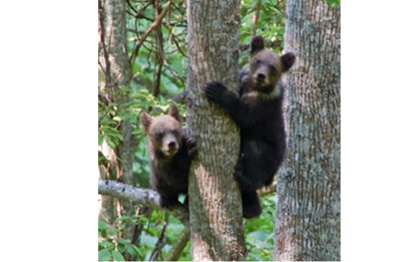
Ursus arctos
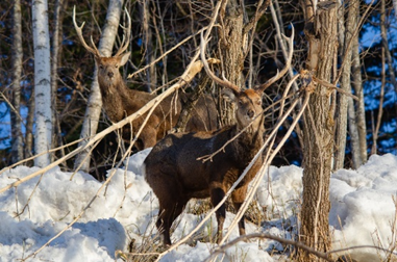
Cervus nippon yesoensis
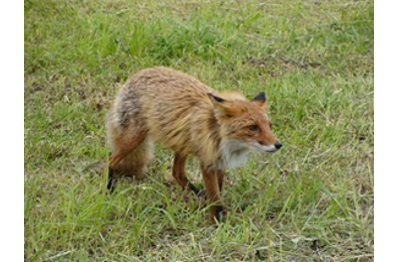
Vulpes vulpes schrencki
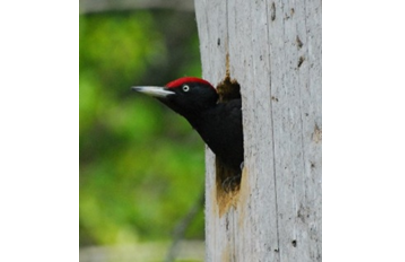
Dryocopus martius
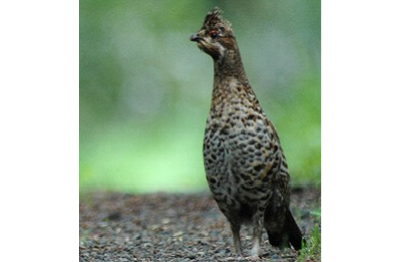
Tetrastes bonasia
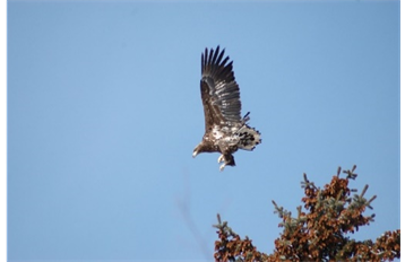
Haliaeetus pelagicus
Main Project Initiatives
■Publication of a 125th anniversary commemorative magazine
A look back at the evolution of the UTHF over the past 125 years since its establishment, with photographs. This will catalog the many research projects conducted using UTHF and provides a summary of the major research results.
■Production of a 125th anniversary photo and video archive collection
Photos and videos stored in the UTHF will be organized and edited to document the forest and its management practices, major forest disturbance events and their impacts, and other changes over the past 125 years. In addition, a wide range of images of the current state of the forests and forest management methods will be taken and used as documentation to pass on to future generations.
■Publication of books in English
This book, tentatively titled "Integrative Forest Management and Silviculture: Harmonizing Conservation and Production", mainly introduces the nature-based forest management methods (Rinbun Segyo Ho) practiced at UTHF since 1958. At a time when the world's forestry industry is shifting to more nature-based management practices, forest management under the 60+ year old Rinbun Segyo Ho can serve as a useful international case study.
■Commemorative Ceremony and Lecture
On October 11-12, 2024 (tentative), a ceremony, lectures, tours, etc. will be held to commemorate the 125th anniversary of the founding of UTHF.
Benefits of your donation
◆To all donors
You will be invited to attend the commemorative lecture and ceremony online, scheduled to take place in October 2024.
1.【More than JPY 30,000 but less than JPY 100,000】
A souvenir, such as a key chain or other small woodcraft, made from timber produced within UTHF.
2. 【More than JPY 100,000 but less than JPY 500,000】
A souvenir, such as a pen case or other woodcraft, made from timber produced within UTHF.
3. 【Between JPY 500,000 and JPY 1,000,000】
In addition to the gift 2, a commemorative magazine and photo album.
4.【Over JPY 1 million】
In addition to the gifts in 3, a special commemorative gift (currently being selected)
*The donation amount to be considered will be that of one sole donation.
*The gifts will be provided for donations made through to the end of October 2024.
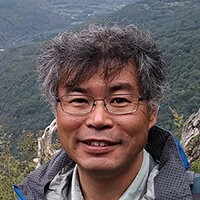
Project Leader
Toshiaki Owari
Director, The University of Tokyo Hokkaido Forest
Graduate School of Agricultural and Life Sciences
The University of Tokyo



